Equipment
TaylorMade OS and OS CB putters
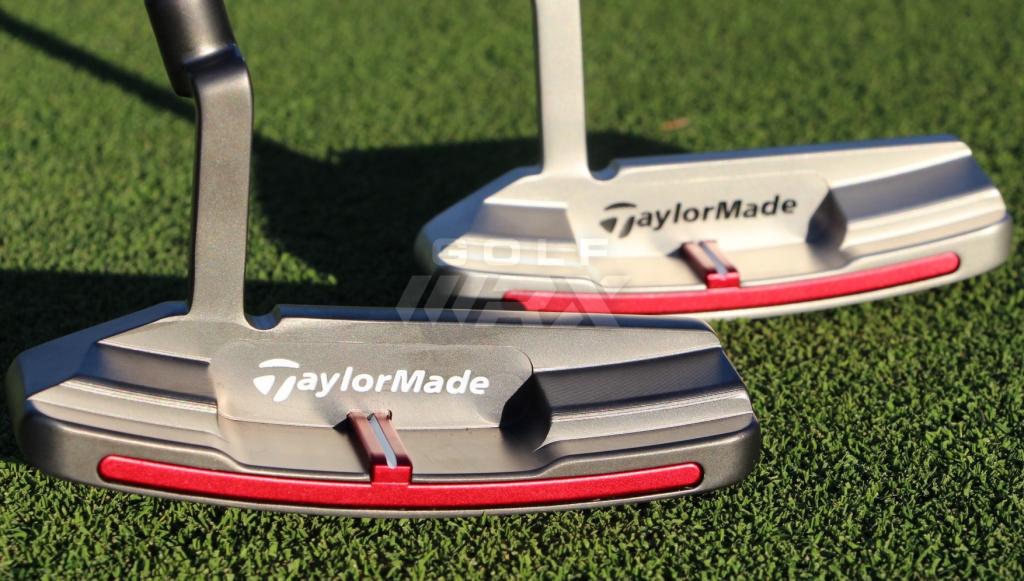
The OS in TaylorMade’s new OS and OS CB putters stands for “oversize.” With its new putter line, the company took two of its most popular blade and mallet putters — the Daytona and Monte Carlo — and increased their size, which increased their forgiveness as well as the size of their alignment aids.
Clay Long, TaylorMade’s Director of Product Creation for Irons and Wedges, has been designing putters for a long time, most famously the MacGregor Response ZT 615 putter Jack Nicklaus used to win the 1986 Masters. That putter had an extremely high moment of inertia (MOI), a measure of forgiveness, thanks to its all-aluminum construction, which allowed the putter to be made bigger but gave it a non-traditional sound.
The OS and OS CB putters have a high MOI, but don’t skimp on feel thanks to their thin-wall, polymer-filled construction. The putters are cast from steel and then “skim milled,” which gives them a premium look and consistent shaping. After the milling process, polymer is injected into the putter bodies to dampen their sound, and the backs of the putters are then sealed with a red aluminum insert. The OS and OS CB putters also use a new TaylorMade 6061 aluminum face insert, which is vertically milled to create more friction at impact for a better ball roll.
According to Long, the OS Daytona putter is 7 percent larger than last year’s Ghost Tour Daytona. The OS Daytona CB, which stands for “counter balanced,” has a heavier head and heavier grip to help golfers make a smoother stroke. Its putter head measures 13 percent larger than last year’s Ghost Tour Daytona. The OS Monte Carlo is 5 percent larger than last year’s Ghost Tour model and 12 percent larger in the CB version.
The new line also includes a Spider OS putter, which is available in a standard and CB version that has a more square look than past Spider models from TaylorMade.
All six putters will be in stores March 18, and come stock with SuperStroke’s Mid Slim 2.0 grip (the CB versions use a 13.75-inch SuperStroke 2.0 XL grip). Learn more about each model below.
Daytona Blade
- Price: $219 (standard), $249 (CB)
- Toe Hang: 36 degrees
- Lengths: Standard (33, 34, 35 inches), CB (34.5, 36, 38 inches)
- Head weight: 355 grams (standard), 395 grams (CB)
- Grip weight: 95 grams (standard), 130 grams (CB)
Monte Carlo Mallet
- Price: $219 (standard), $249 (CB)
- Toe Hang: 20 degrees
- Lengths: Standard (33, 34, 35 inches), CB (34.5, 36, 38 inches)
- Head weight: 355 grams (standard), 395 grams (CB)
- Grip weight: 95 grams (standard), 130 grams (CB)
Spider OS
- Price: $219 (standard), $249 (CB)
- Toe Hang: Face balanced
- Lengths: Standard (33, 34, 35 inches), CB (34.5, 36, 38 inches)
- Head weight: 355 grams (standard), 395 grams (CB)
- Grip weight: 95 grams (standard), 130 grams (CB)
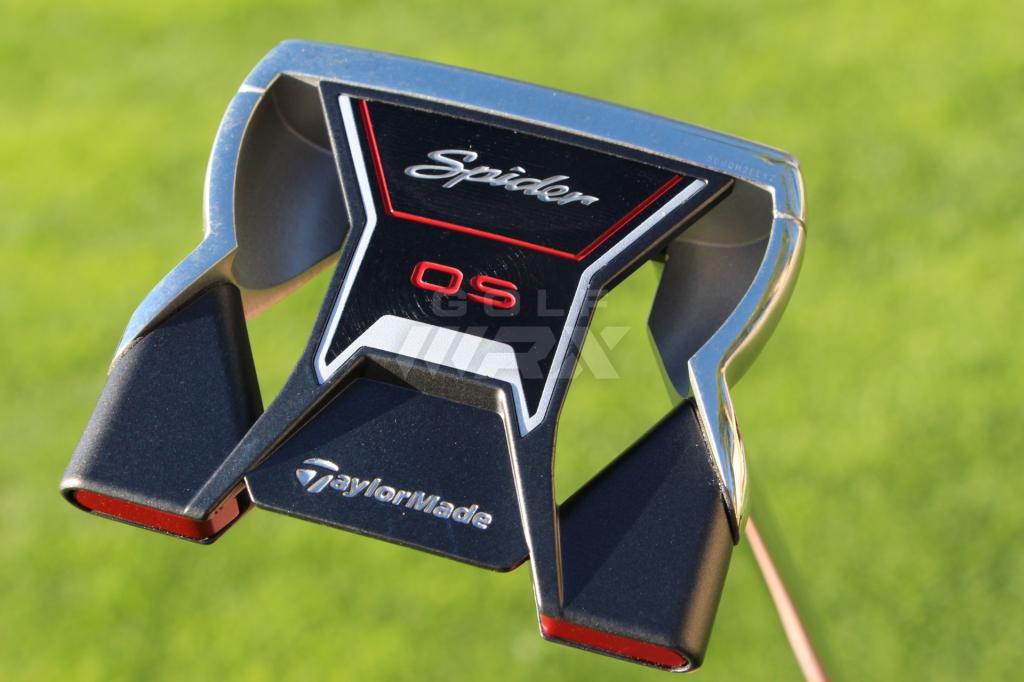
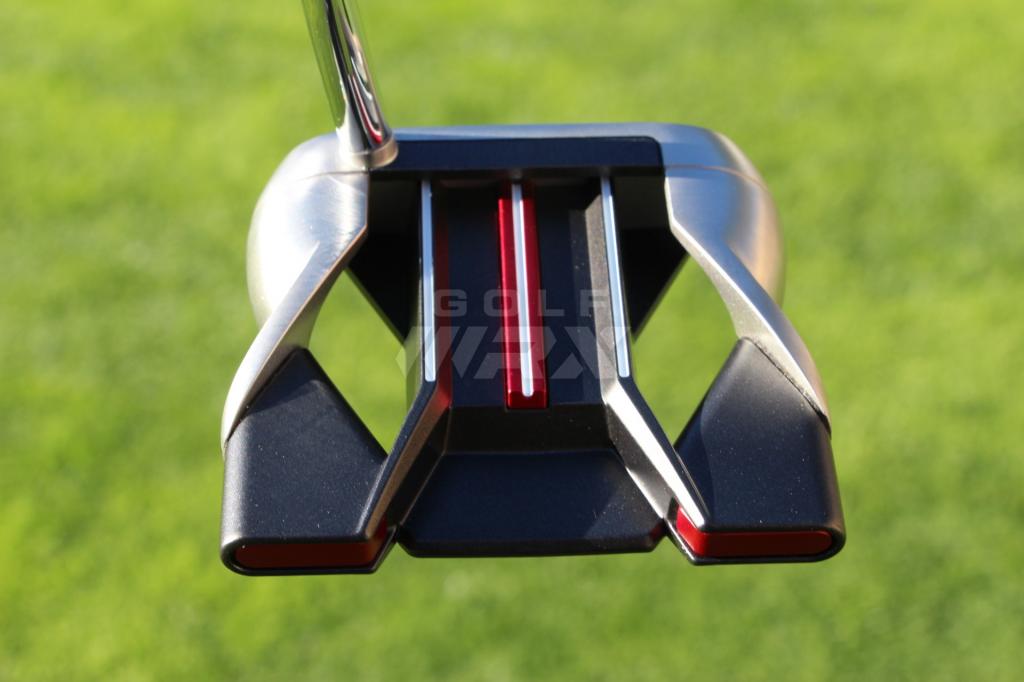
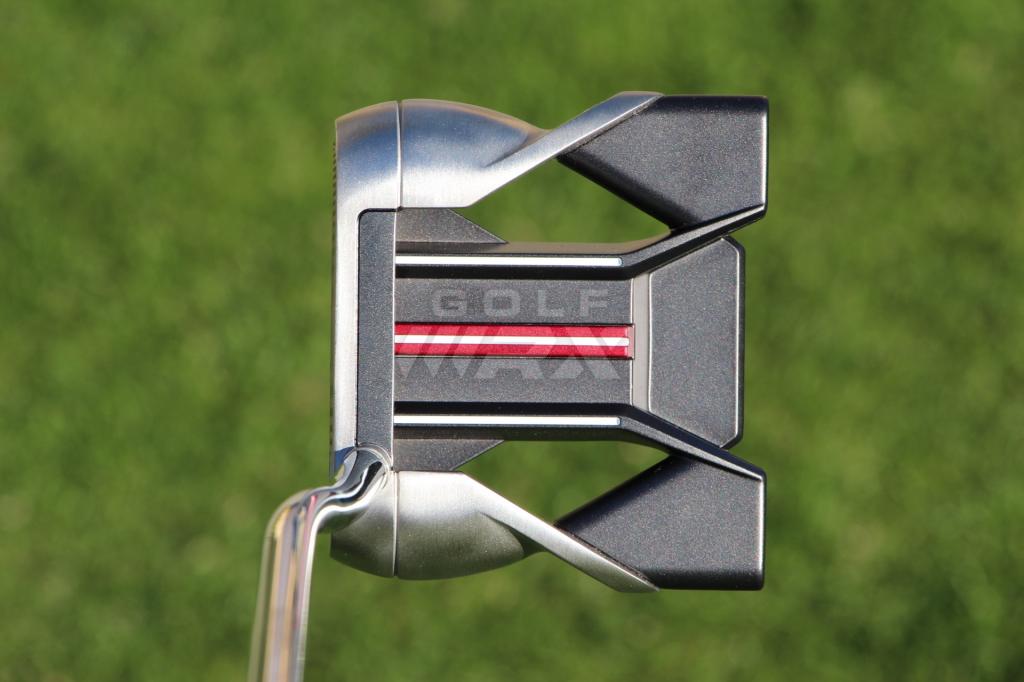
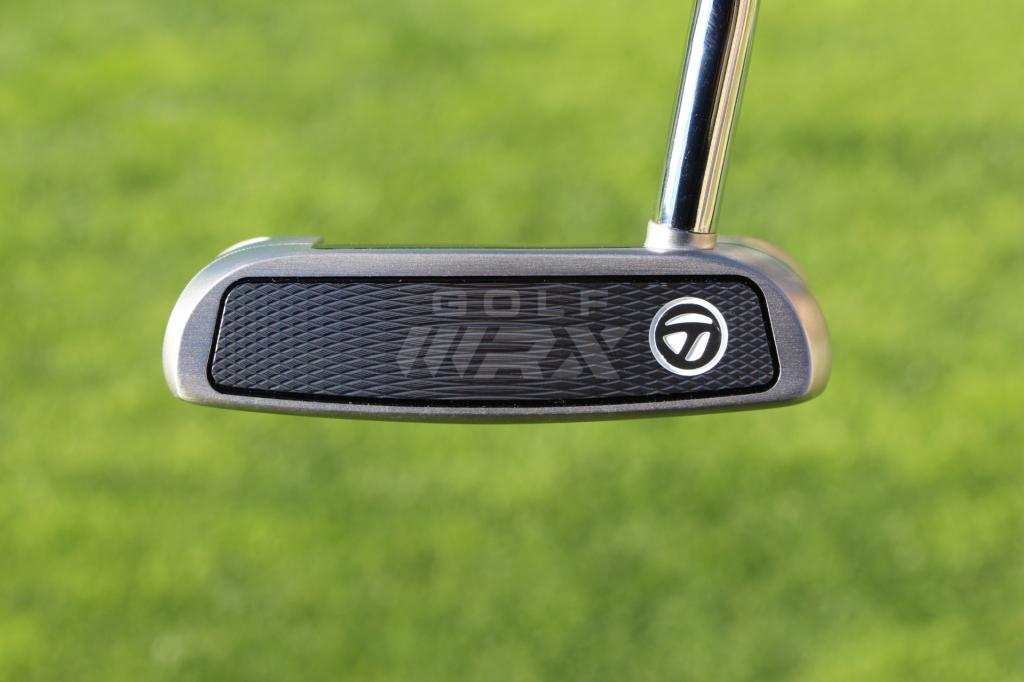
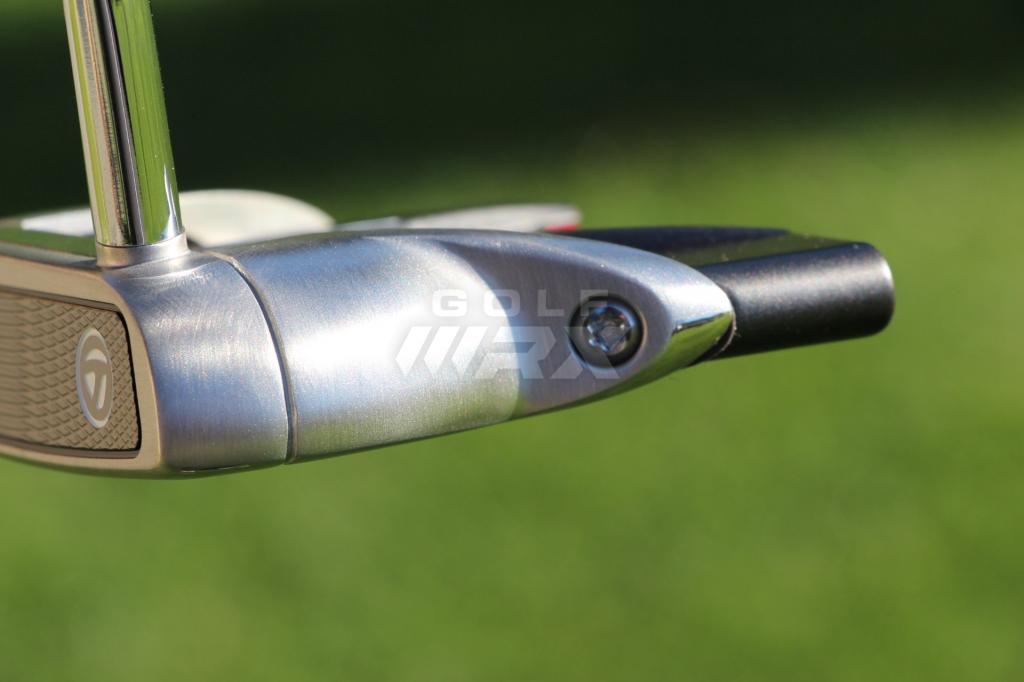
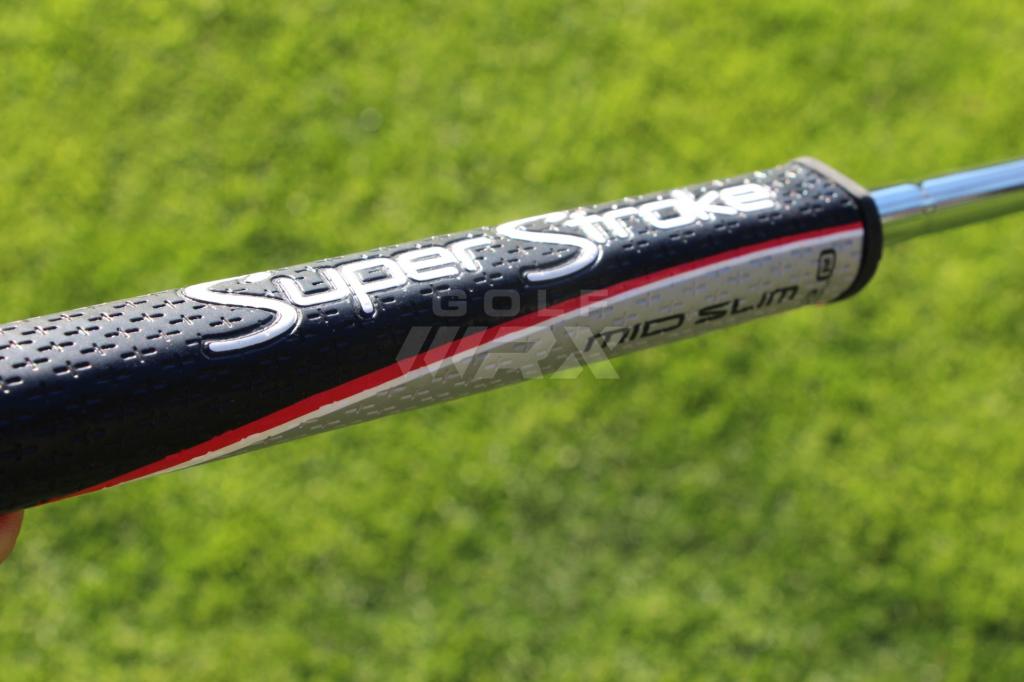 See what GolfWRX Members are saying about the putters in our forum.
See what GolfWRX Members are saying about the putters in our forum.
- LIKE111
- LEGIT31
- WOW16
- LOL6
- IDHT4
- FLOP11
- OB6
- SHANK70
Whats in the Bag
WITB Time Machine: Danny Willett’s winning WITB, 2016 Masters
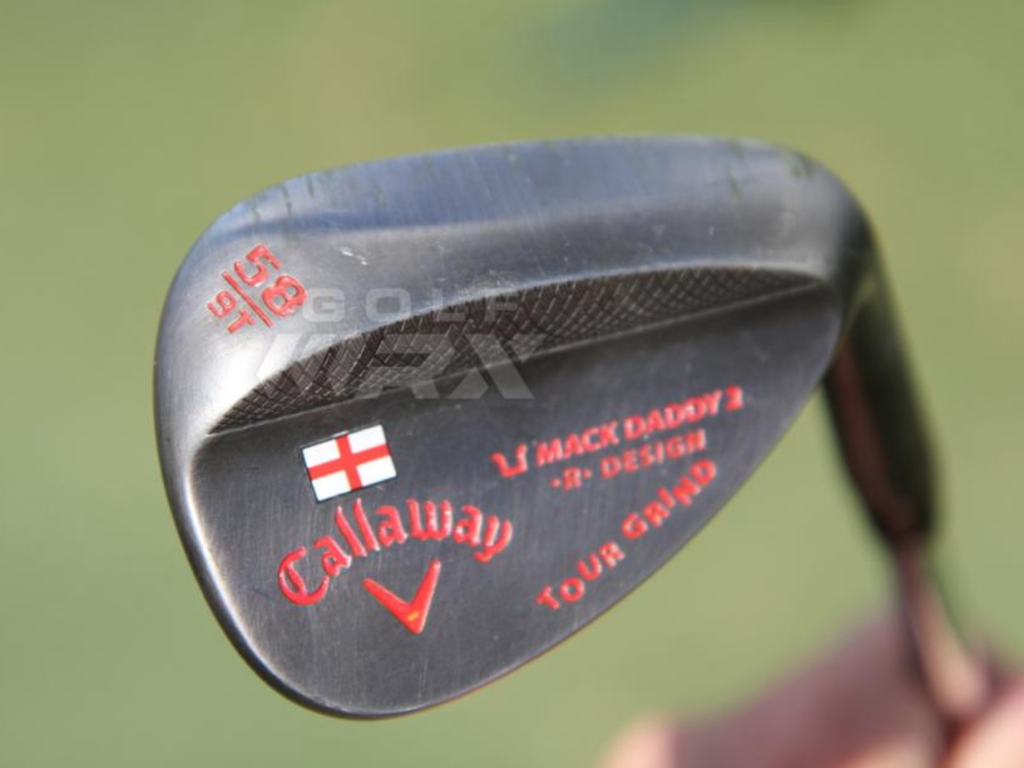
Driver: Callaway XR 16 (9 degrees)
Shaft: Mitsubishi Rayon Diamana W-Series 60 X
Length: 45.5 inches
3-wood: Callaway XR 16 (15 degrees)
Shaft: Mitsubishi Rayon Diamana W-Series 70X
5-wood: Callaway XR 16 (19 degrees)
Shaft: Mitsubishi Rayon Diamana W-Series 80X
Irons: Callaway Apex UT (2, 4), Callaway Apex Pro (5-9)
Shaft: True Temper Dynamic Gold X100 Superlite
Wedges: Callaway Mack Daddy 2 (47-11 S-Grind) Callaway Mack Daddy 2 Tour Grind (54-11, 58-9)
Shaft: True Temper Dynamic Gold X100 Superlite
Putter: Odyssey Versa #1 Wide (WBW)
Lie angle: 71 degrees
Ball: Callaway Speed Regime SR-3
Check out more photos of Willett’s equipment from 2016 here.
- LIKE0
- LEGIT0
- WOW0
- LOL0
- IDHT0
- FLOP0
- OB0
- SHANK0
Equipment
Project X Denali Blue, Black shaft Review – Club Junkie Review
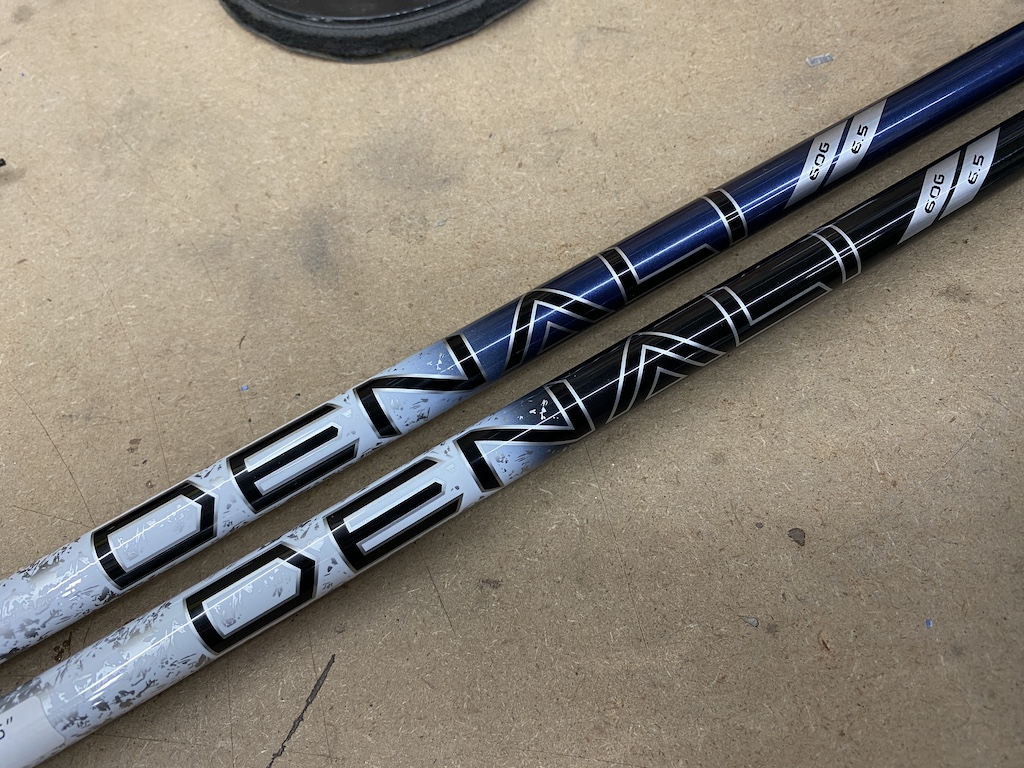
Originally, Project X was known for low-spin steel iron shafts. However, the company might now be known for wood shafts. Denali is the newest line of graphite shafts from Project X. With the Denali line, the company focuses on feel as well as performance.
There are two profiles in the Denali line, Blue and Black, to fit different launch windows. Denali Blue is the mid-launch and mid-spin profile for players who are looking for a little added launch and Denali Black is designed for low-launch and low-spin. Both models are going to offer you a smooth feel and accuracy.
For a full in-depth review check out the Club Junkie podcast on all podcast streaming platforms and on YouTube.
Project X Denali Blue
I typically fit better into mid-launch shafts, as I don’t hit a very high ball so the Denali Blue was the model I was more excited to try. Out of the box, the shaft looks great and from a distance, it is almost hard to tell the dark blue from the Denali Black. With a logo down install of the shaft, you don’t have anything to distract your eyes, just a clean look with the transition from the white and silver handle section to the dark navy mid and tip.
Out on the course, the Blue offers a very smooth feel that gives you a good kick at impact. The shaft loads easily and you can feel the slightly softer handle section compared to the HZRDUS lineup. This gives the shaft a really good feel of it loading on the transition to the downswing, and as your hands get to impact, the Denali Blue keeps going for a nice, strong kick.
Denali Blue is easy to square up at impact and even turn over to hit it straight or just little draws and most of the flex of the shaft feels like it happens right around where the paint changes from silver to blue. The Blue launches easily and produces what I consider a true mid-flight with the driver. While it is listed as mid-spin, I never noticed any type of rise in my drives. Drives that I didn’t hit perfectly were met with good stability and a ball that stayed online well.
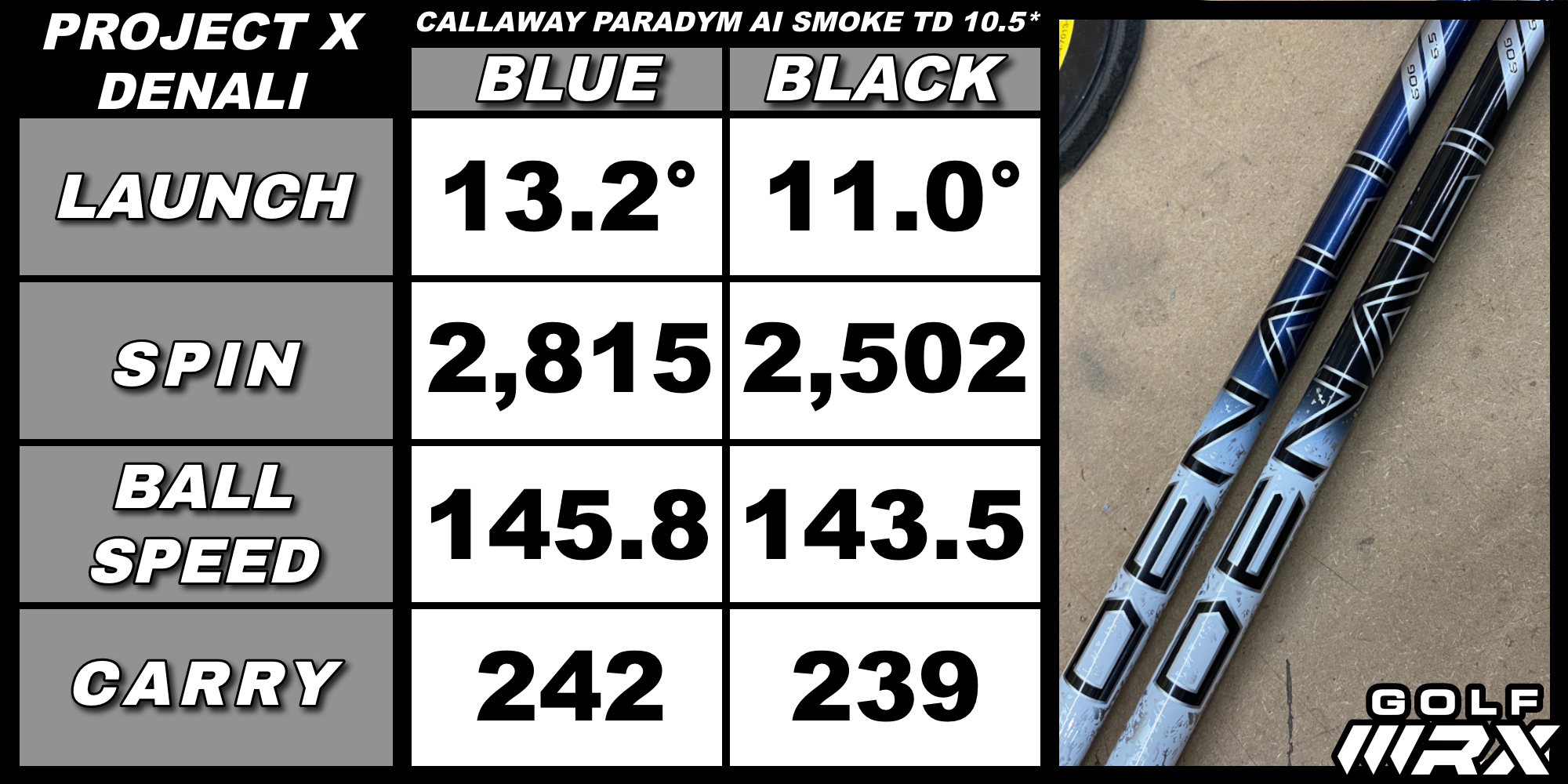
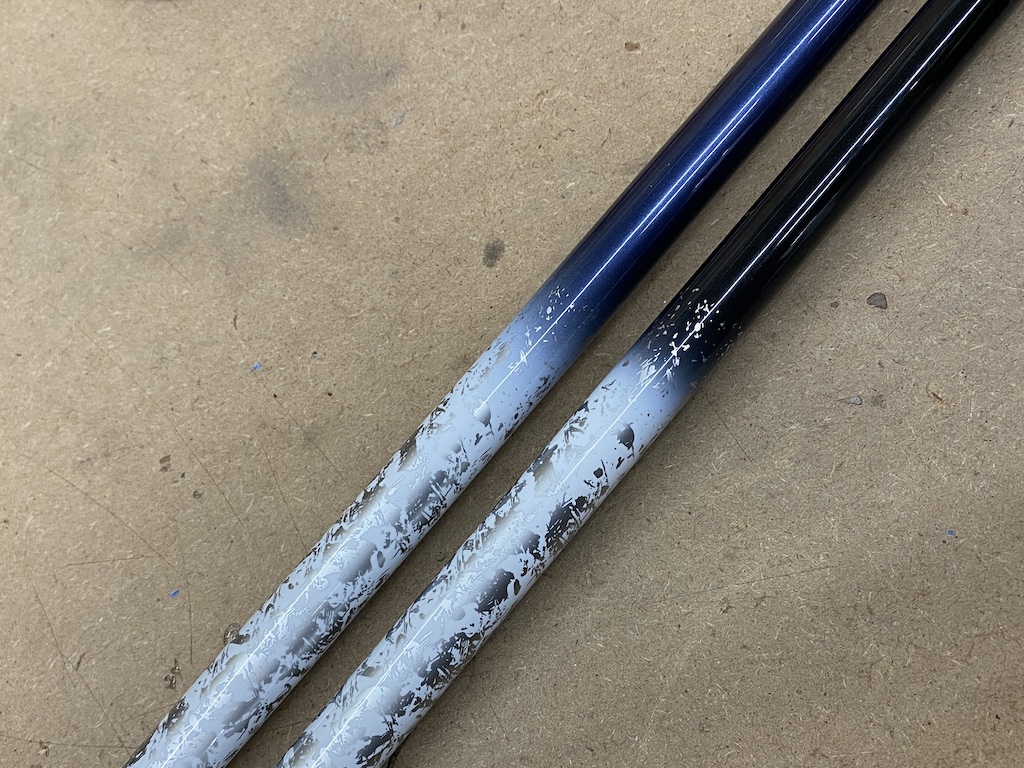
Project X Denali Black
When you hold the Denali Black in your hands you can tell it is a more stout shaft compared to its Blue sibling by just trying to bend it. While the handle feels close to the Blue in terms of stiffness, you can tell the tip is much stiffer when you swing it.
Denali Black definitely takes a little more power to load it but the shaft is still smooth and doesn’t give you any harsh vibrations. Where the Blue kicks hard at impact, the Black holds on a little and feels like keeps you in control even on swings that you try and put a little extra effort into. The stiff tip section also makes it a little harder to square up at impact and for some players could take away a little of the draw from their shot.
Launch is lower and more penetrating compared to the Blue and produces a boring, flat trajectory. Shots into the wind don’t rise or spin up, proving that the spin stays down. Like its mid-launch sibling, the Black is very stable and mishits and keeps the ball on a straighter line. Shots low off the face don’t get very high up in the air, but the low spin properties get the ball out there farther than you would expect. For being such a stout shaft, the feel is very good, and the Denali Black does keep harsh vibrations from your hands.
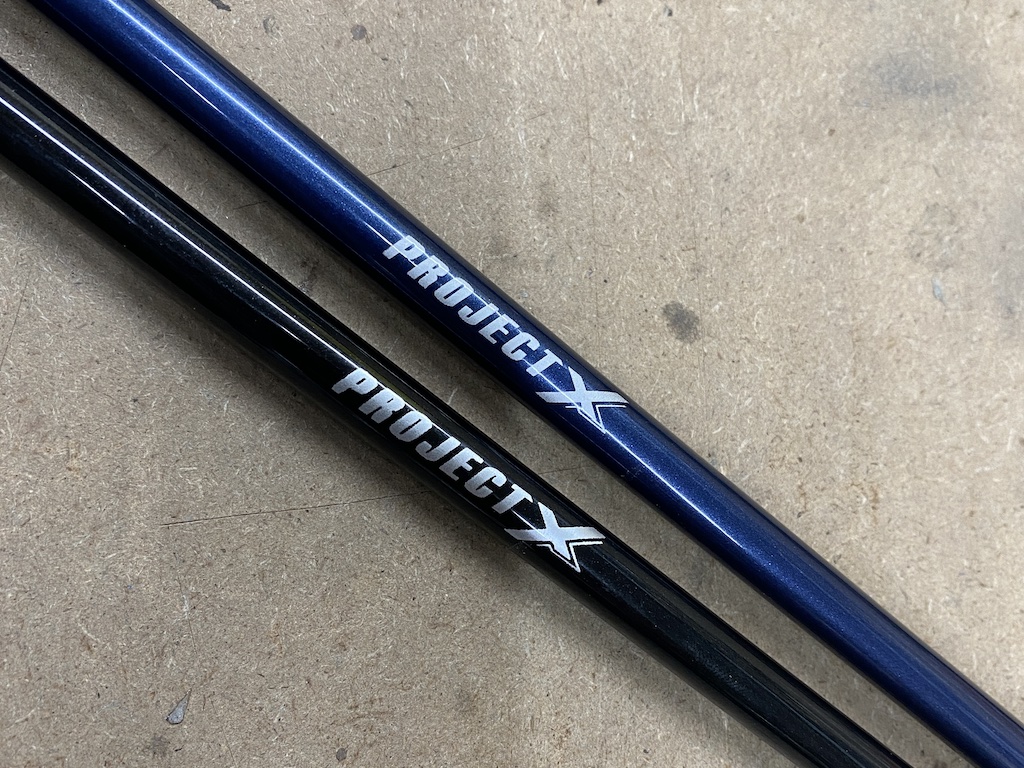
Overall the Project X Denali Blue and Black are great additions to the line of popular wood shafts. If you are looking for good feel and solid performance the Denali line is worth trying out with your swing. Choose Blue for mid-launch and mid-spin or Black for lower launch and low spin.
- LIKE1
- LEGIT1
- WOW1
- LOL0
- IDHT0
- FLOP0
- OB0
- SHANK0
Equipment
What we know about Bryson DeChambeau’s 3D-printed Avoda irons
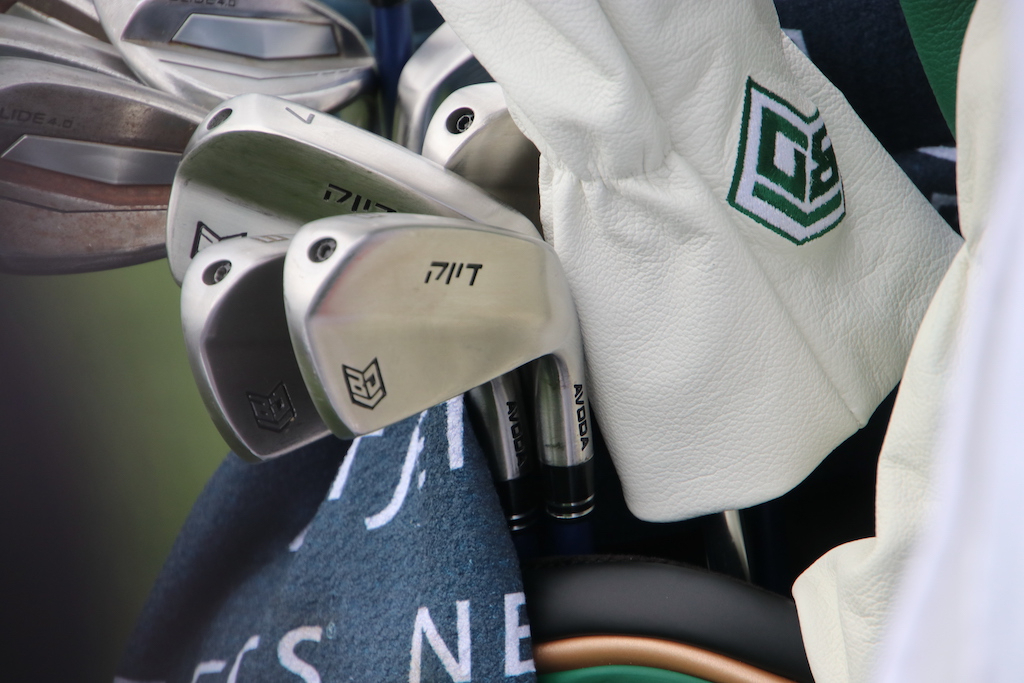
Bryson DeChambeau fired an opening-round 7-under 65 at Augusta National, hitting an impressive 15 of 18 greens in regulation in the process. Golf’s mad scientist’s play grabbed headlines and so too did his equipment. In place of the Ping i230 irons he had in the bag last week for LIV Golf’s Miami event, DeChambeau is gaming a prototype 5-PW set of irons from little-known direct-to-consumer manufacturer Avoda.
What is Avoda Golf?
Founded by Tom Bailey, also a Mike Schy student like Bryson DeChambeau, Avoda Golf is a direct-to-consumer golf equipment company that currently manufactures both single and variable-length irons in one model that are available for pre-order.
What irons is Bryson DeChambeau playing?
Per multiple reports, DeChambeau is playing a custom-designed set of single-length irons that incorporate bulge and roll into the face design. The two-piece 3D-printed irons were reportedly only approved for play by the USGA this week, according to Golfweek’s Adam Schupak.
Regarding the irons, DeChambeau told Golf Channel the irons’ performance on mishits was the determining factor in putting them in play this week. “When I mishit on the toe or the heel,” DeChambeau said. “It seems to fly a lot straighter for me and that’s what has allowed me to be more comfortable over the ball.”
What can we tell about the design of the clubs?
These days, it is a little hard to speculate on what is under the hood with so many hollow body irons. DeChambeau’s irons look to be hollow on the lower section as they do flare back a decent amount. That “muscle” on the back also looks to be fairly low on the iron head, but we can assume that is progressive through the set, moving up higher in the short irons.
A screw out on the toe is probably used to seal up the hollow cavity and used as a weight to dial in the swing weight of the club. From pictures, it is hard to tell but the sole looks to have a little curve from heel to toe while also having some sharper angles on them. A more boxy and sharper toe section looks to be the design that suits Bryson’s eye based on the irons he has gravitated toward recently.
What are bulge and roll, again?
Two types of curvature in a club face, traditionally incorporated only in wood design. Bulge is heel-toe curvature. Roll is crown-sole curvature. Both design elements are designed to mitigate gear effect on off-center strikes and produce shots that finish closer to the intended target line. (GolfTec has an excellent overview of bulge and roll with some handy GIFs for the visual learner)
What else is in DeChambeau’s bag?
Accompanying his traditional Sik putter, Bryson builds his set with a Ping Glide 4.0 wedges, a Krank Formula Fire driver and 5-wood, and a TaylorMade BRNR Mini Driver, all with LA Golf graphite shafts.
- LIKE23
- LEGIT4
- WOW3
- LOL2
- IDHT2
- FLOP1
- OB1
- SHANK4
-

 19th Hole2 days ago
19th Hole2 days agoDave Portnoy places monstrous outright bet for the 2024 Masters
-

 19th Hole3 weeks ago
19th Hole3 weeks agoJohn Daly stuns fans into silence with brutal opening tee shot on PGA Tour Champions
-

 19th Hole2 weeks ago
19th Hole2 weeks agoThings got heated at the Houston Open between Tony Finau and Alejandro Tosti. Here’s why
-

 19th Hole3 days ago
19th Hole3 days agoTiger Woods arrives at 2024 Masters equipped with a putter that may surprise you
-

 19th Hole1 week ago
19th Hole1 week agoReport: Tiger Woods has ‘eliminated sex’ in preparation for the 2024 Masters
-

 19th Hole3 weeks ago
19th Hole3 weeks agoCharlie Woods finds it tough going on American Junior Golf Association debut
-

 19th Hole1 week ago
19th Hole1 week agoAddiction, spinal fusion, and scam artists – Everything Anthony Kim revealed in candid interview with David Feherty
-

 19th Hole1 week ago
19th Hole1 week agoAnthony Kim says doctors told him that he ‘may not have much time left’ ahead of LIV return

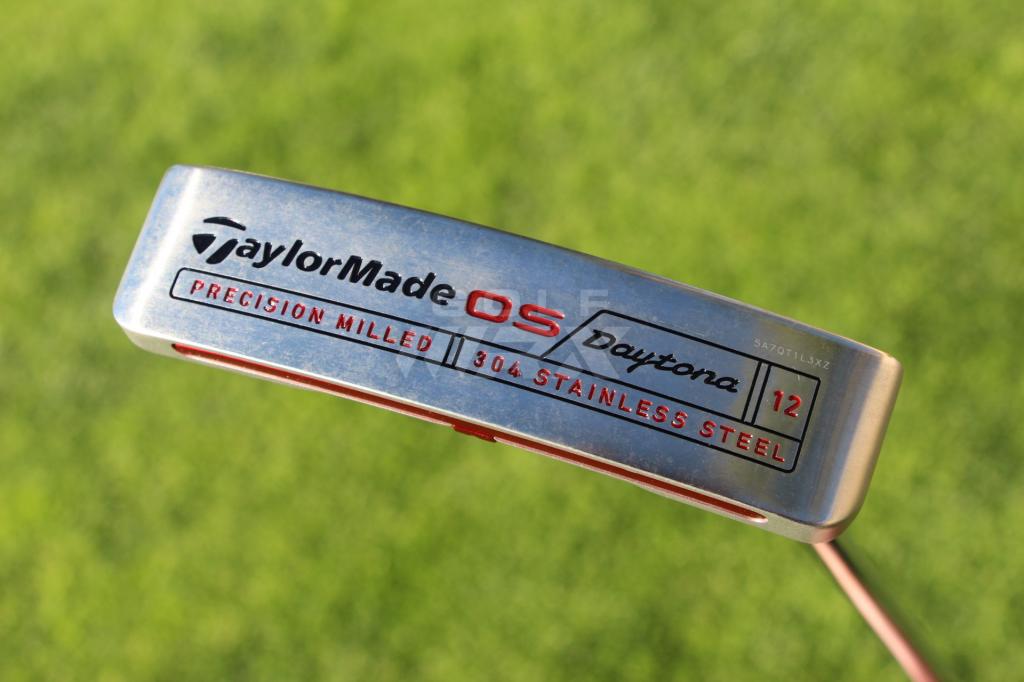
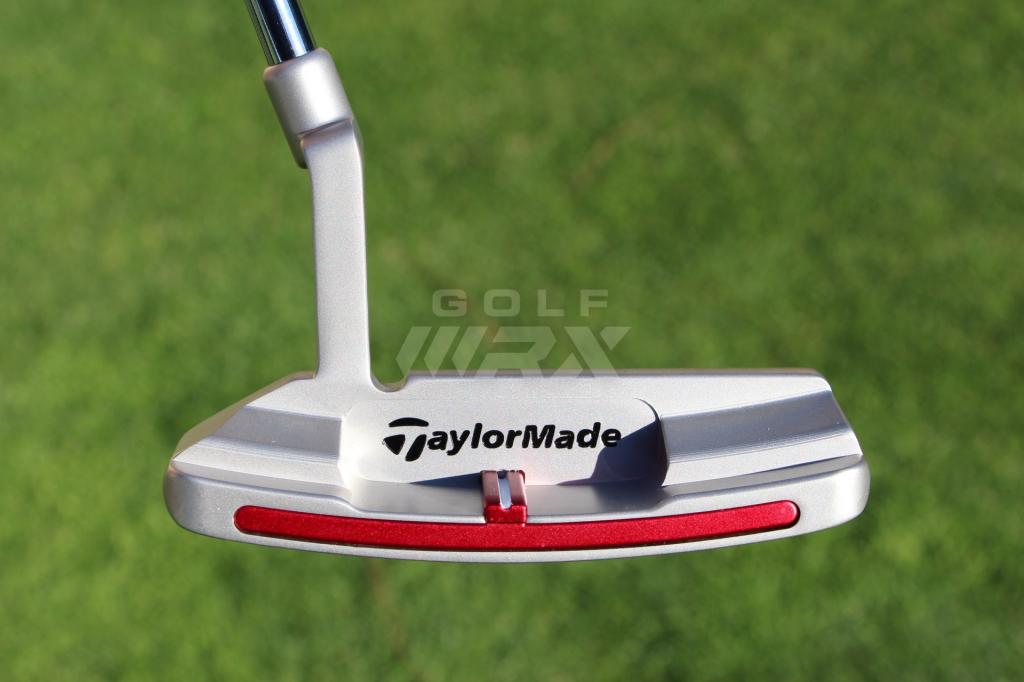
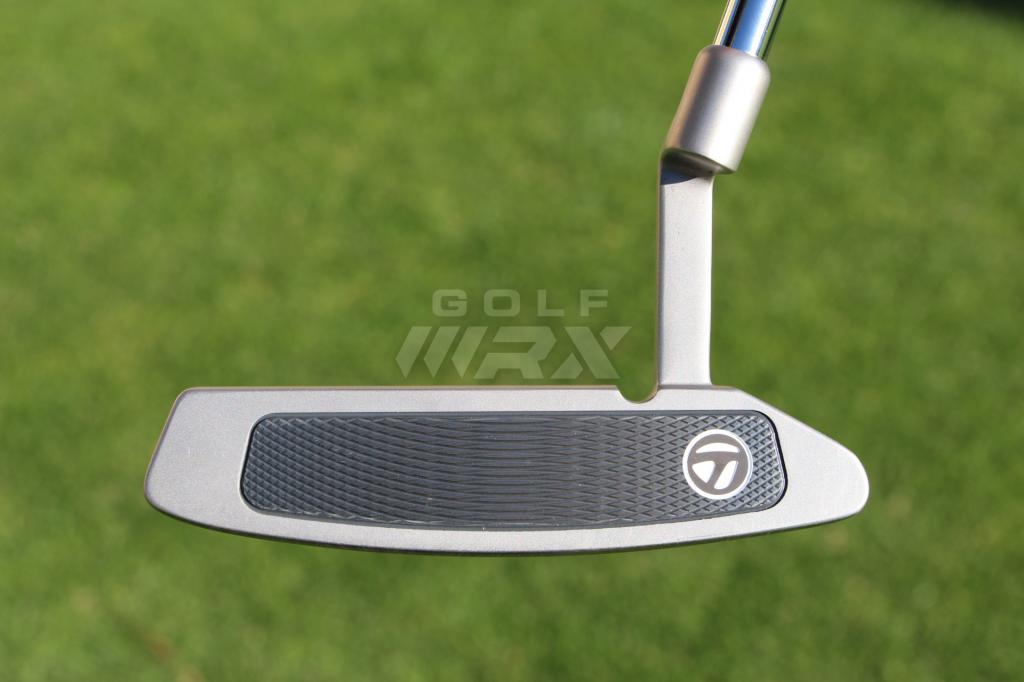
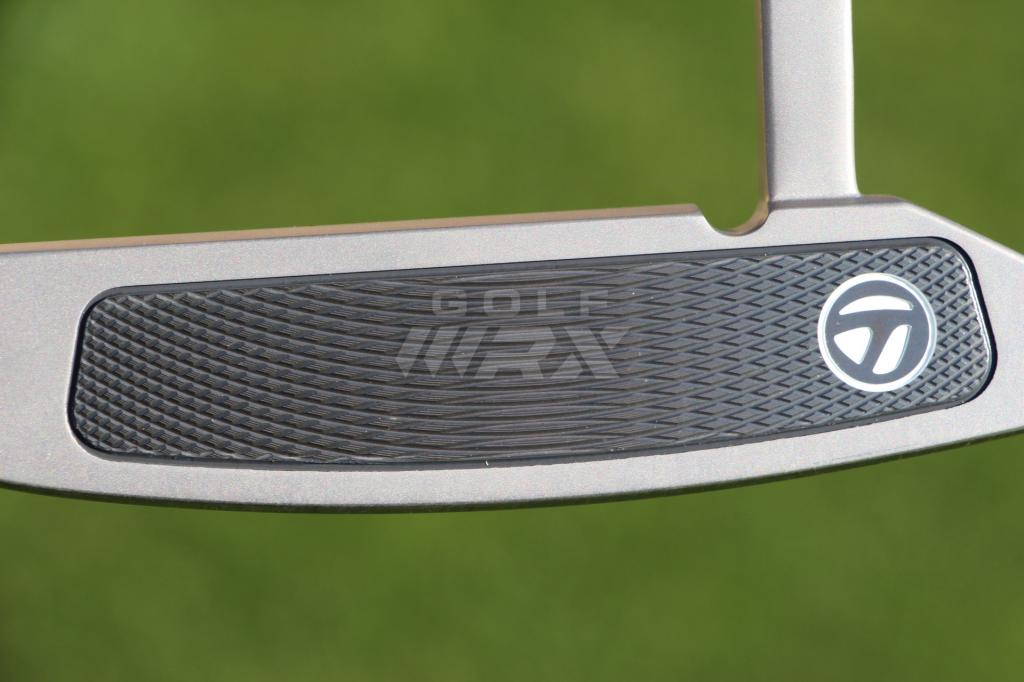
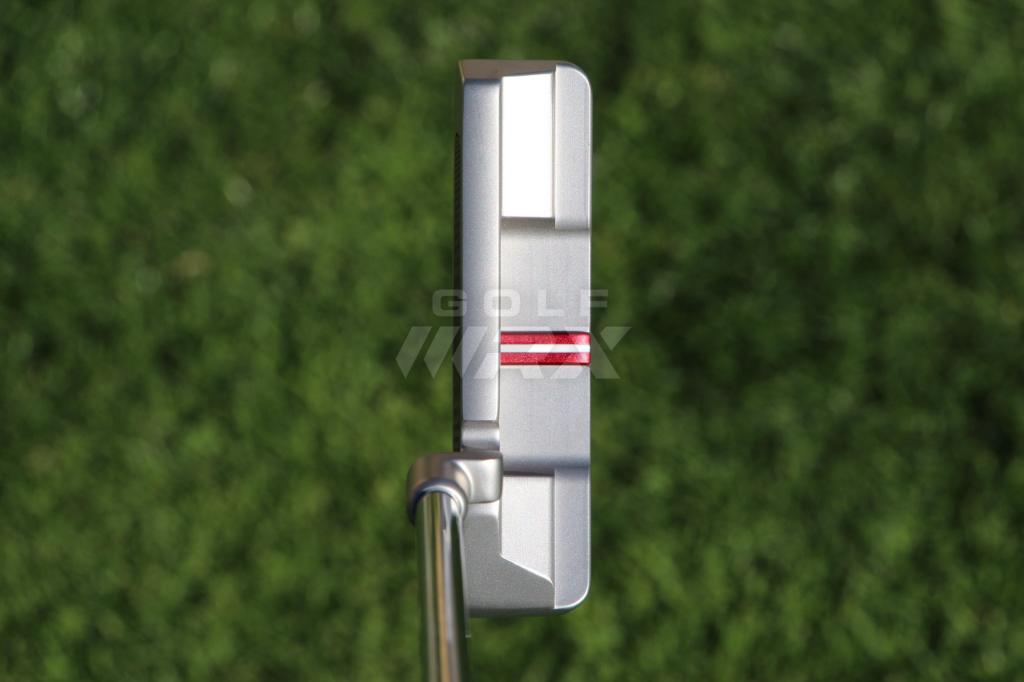
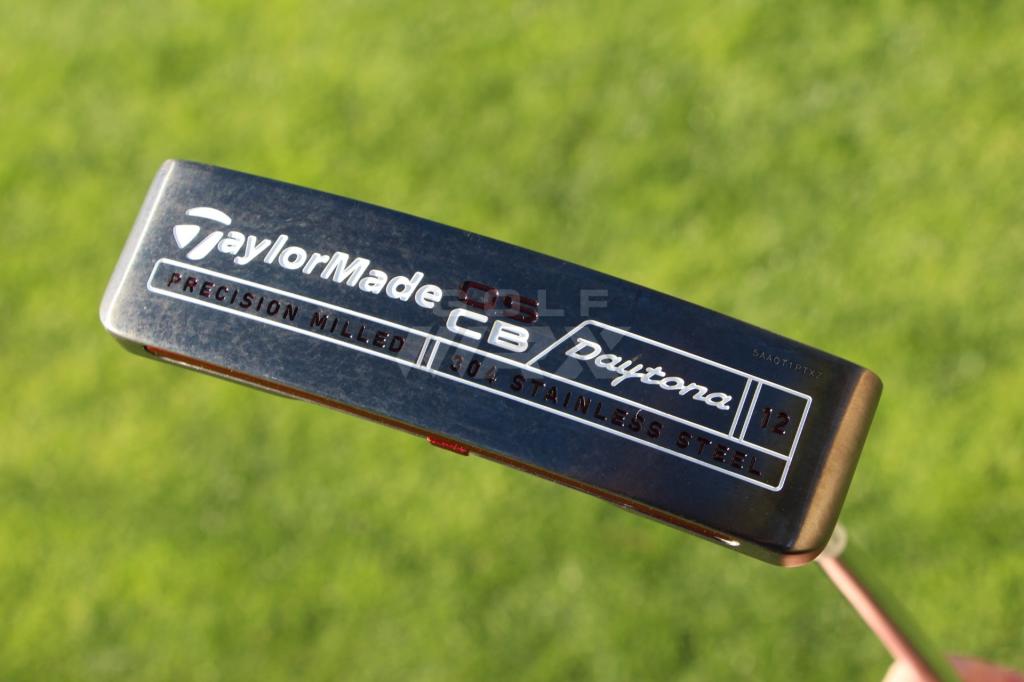
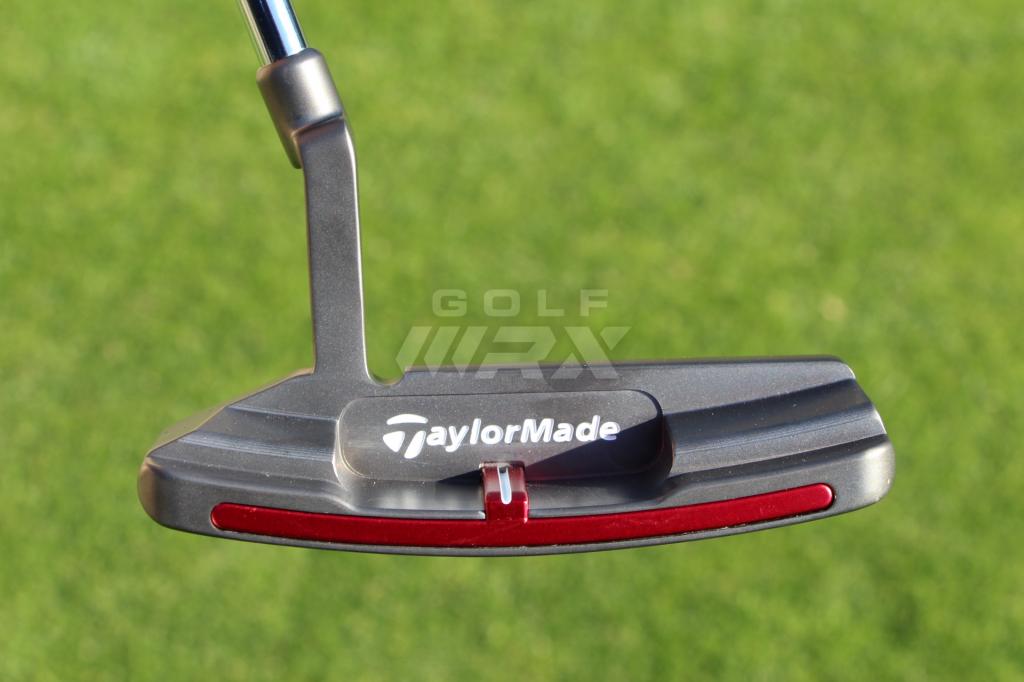
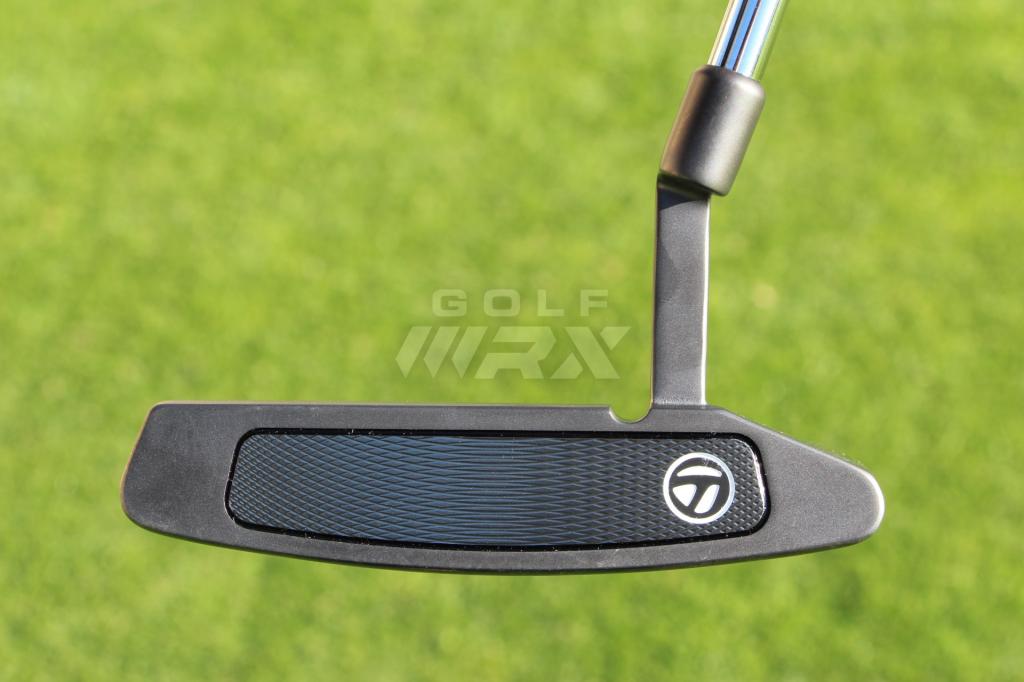
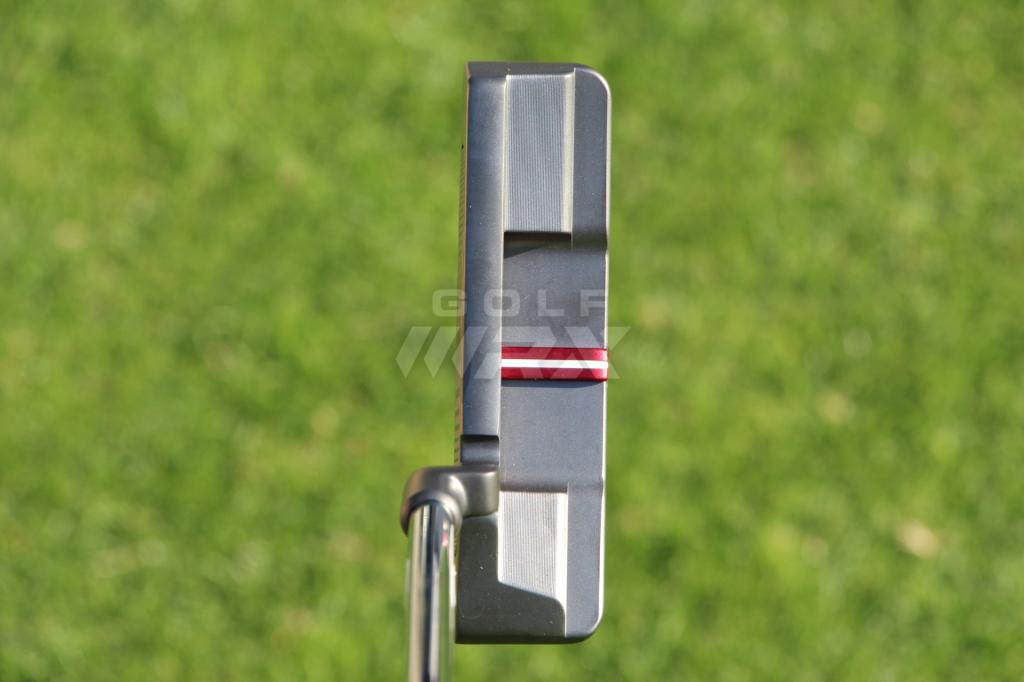
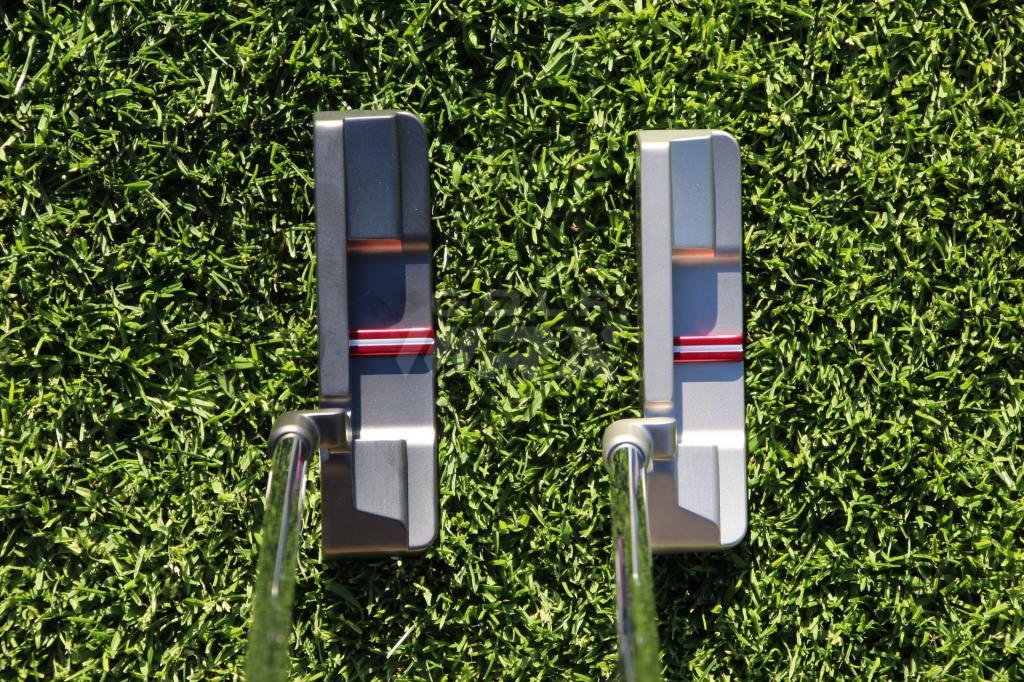
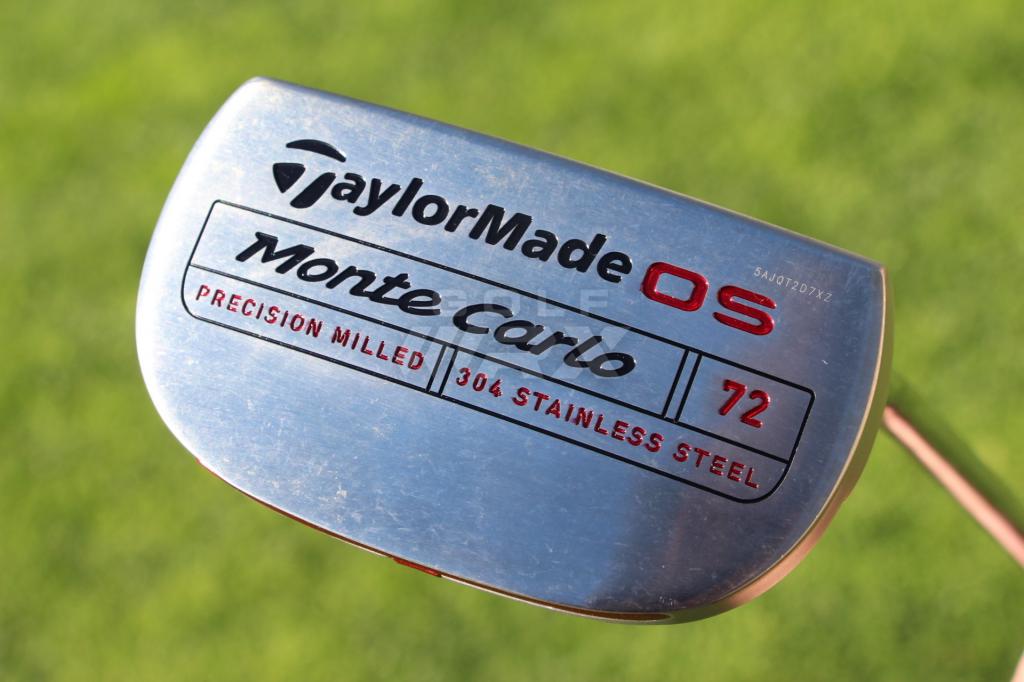
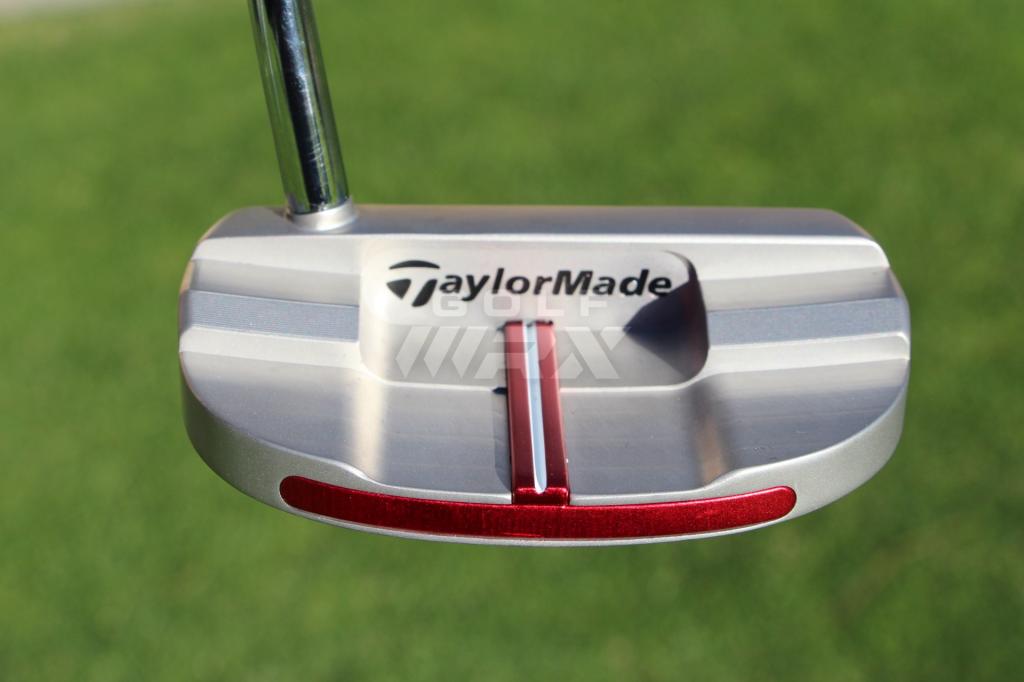
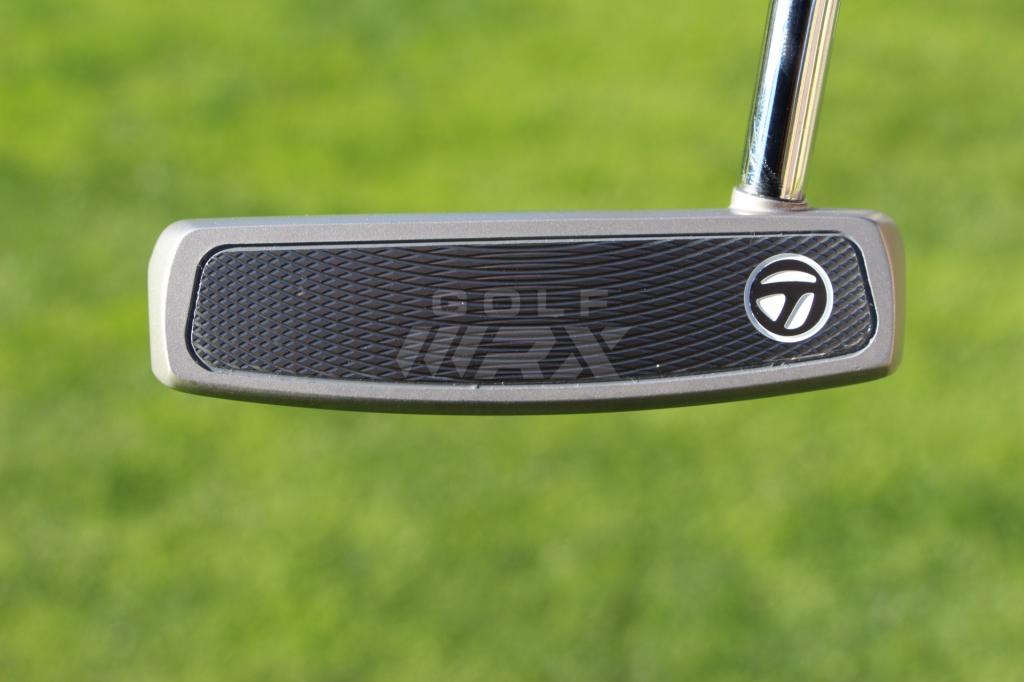
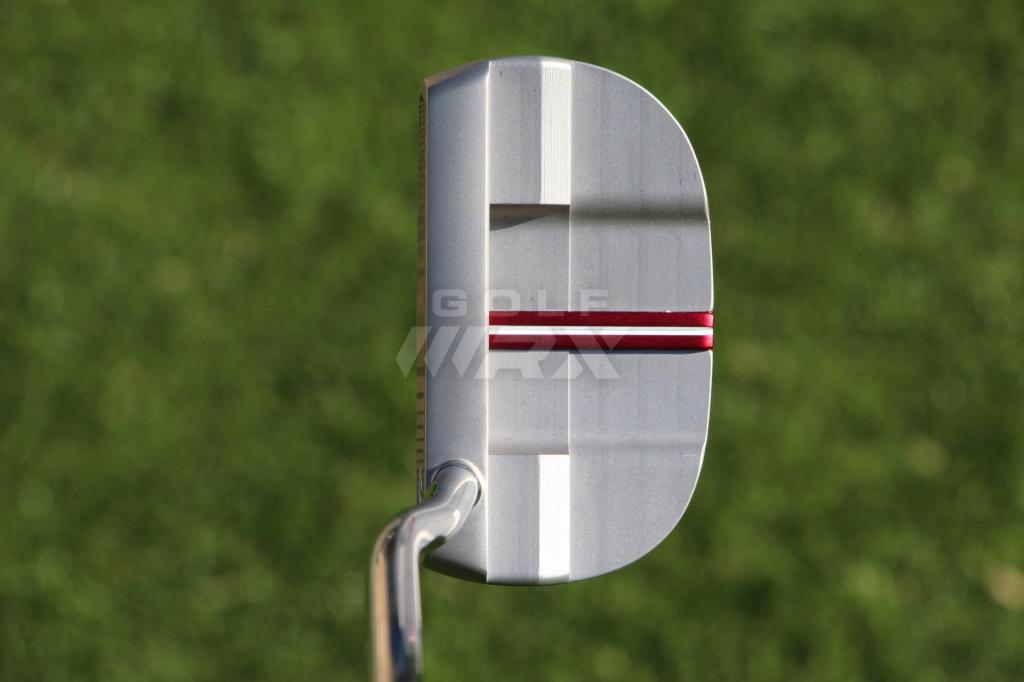
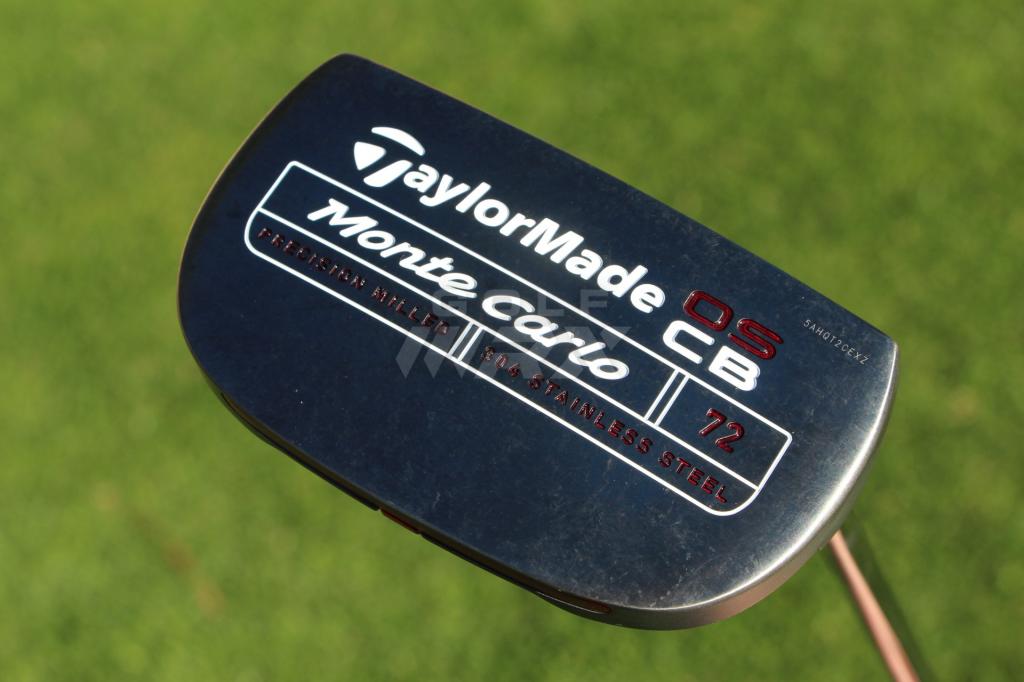
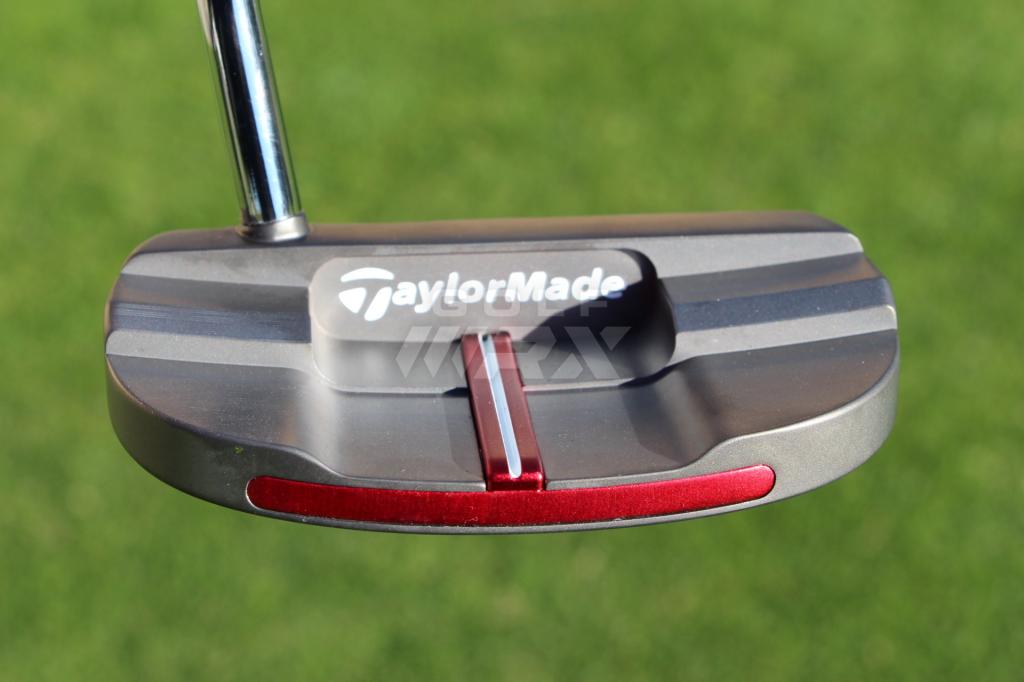
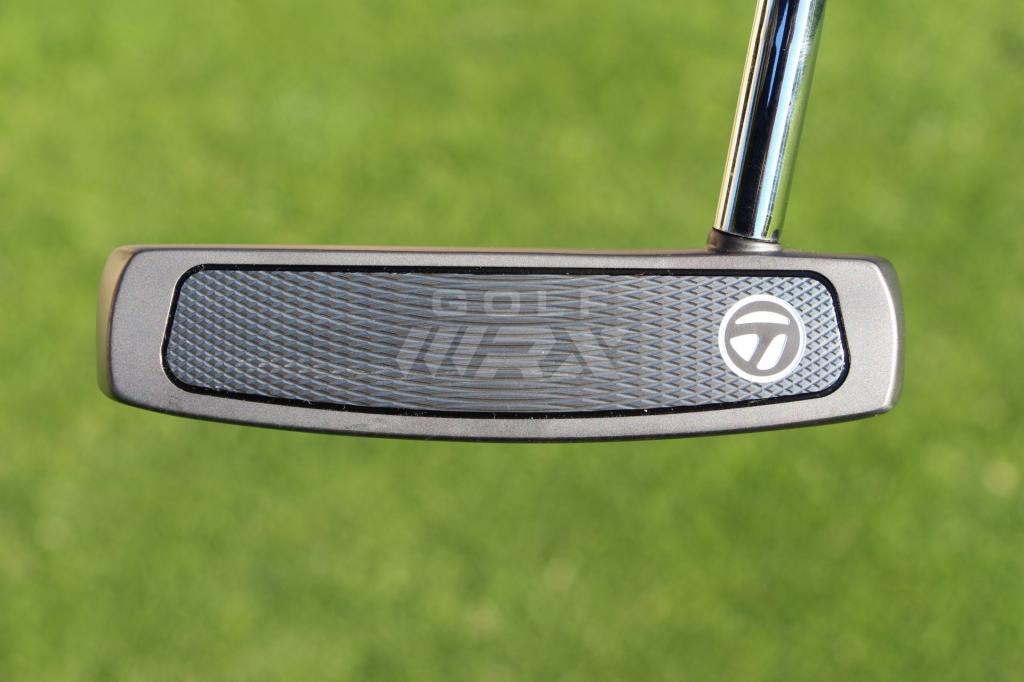
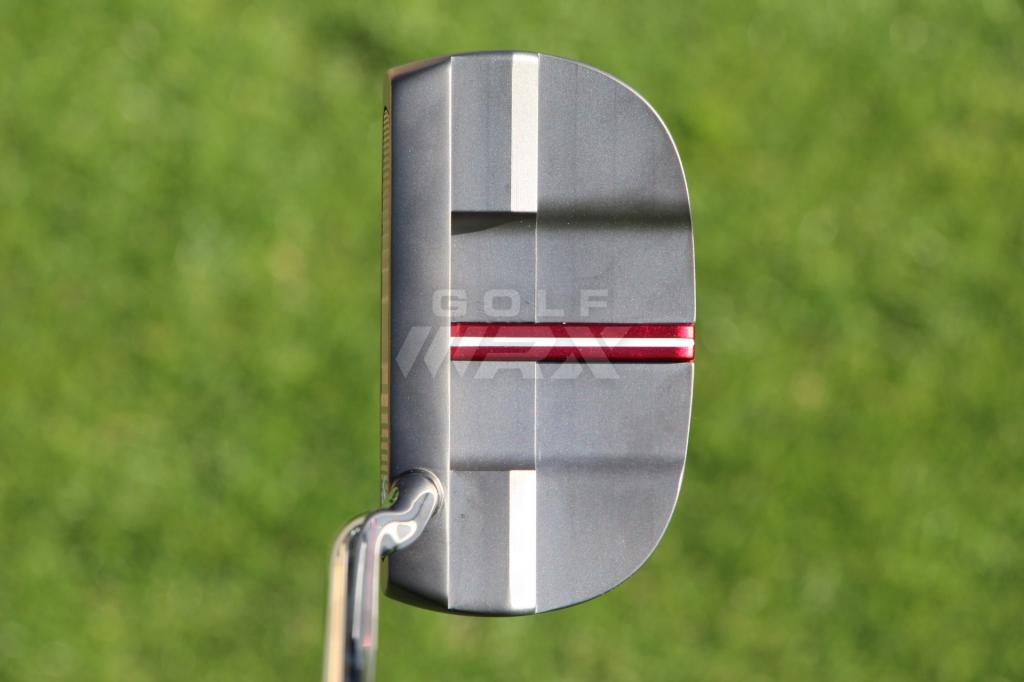
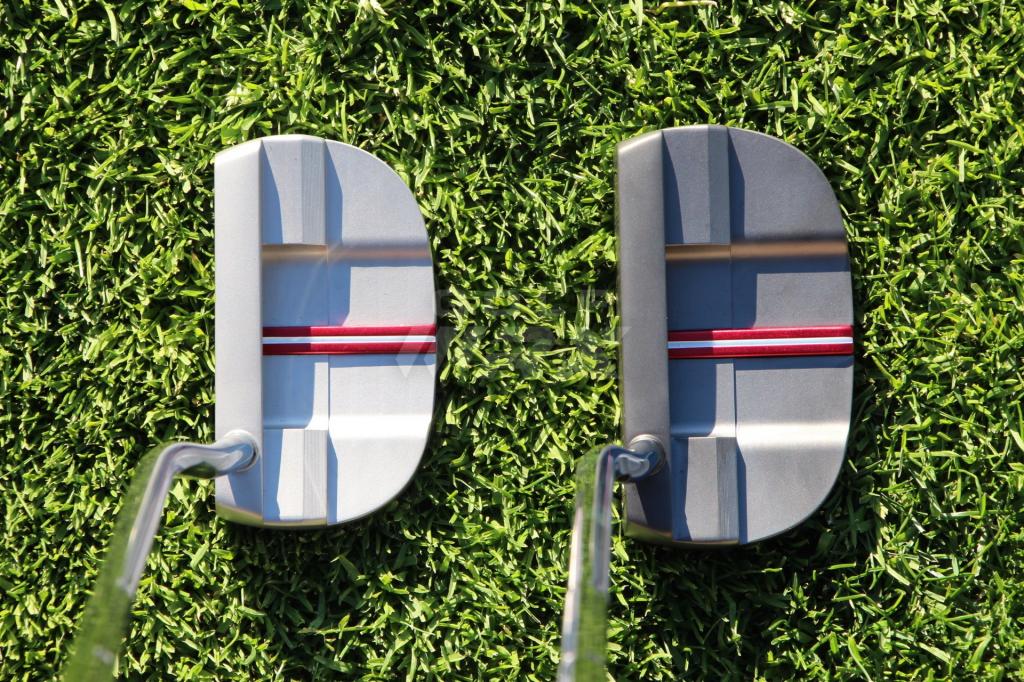


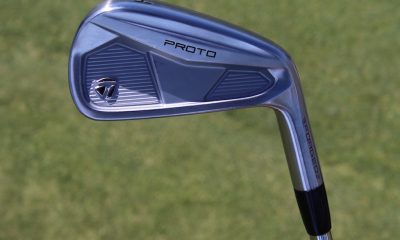

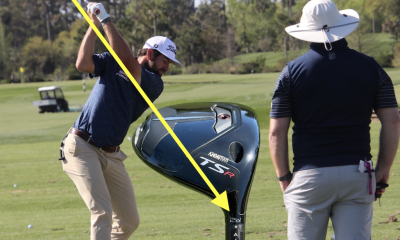

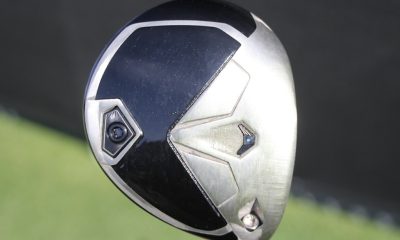



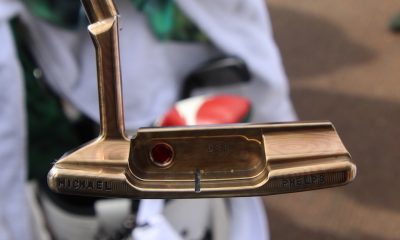

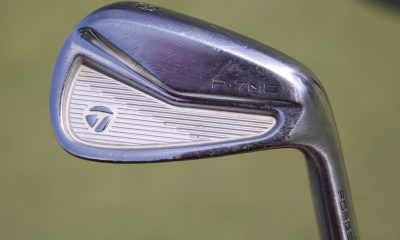

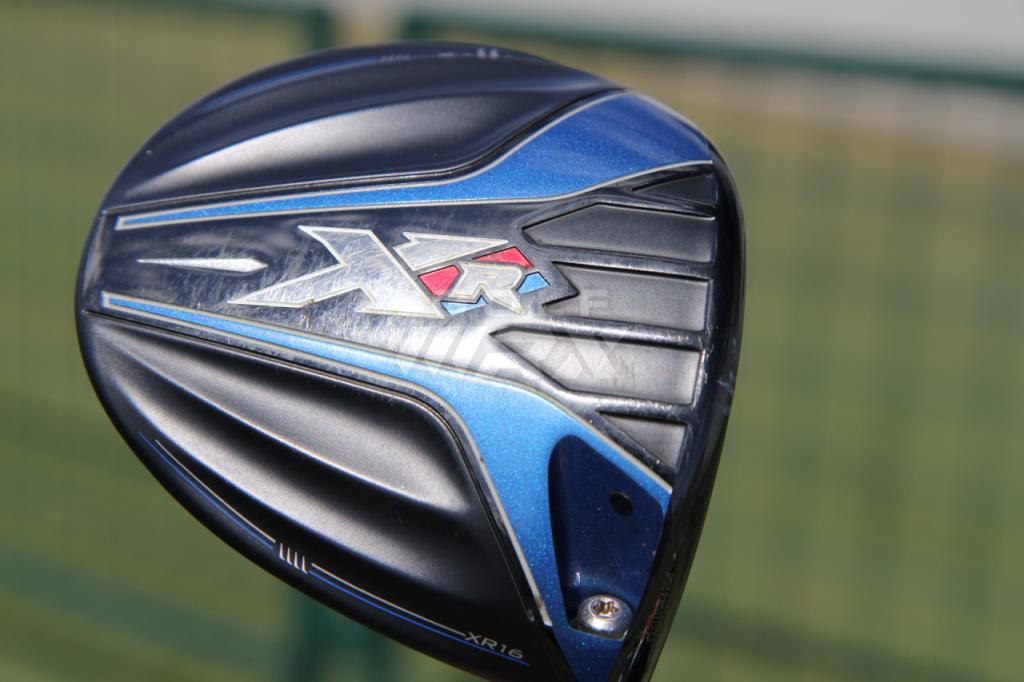
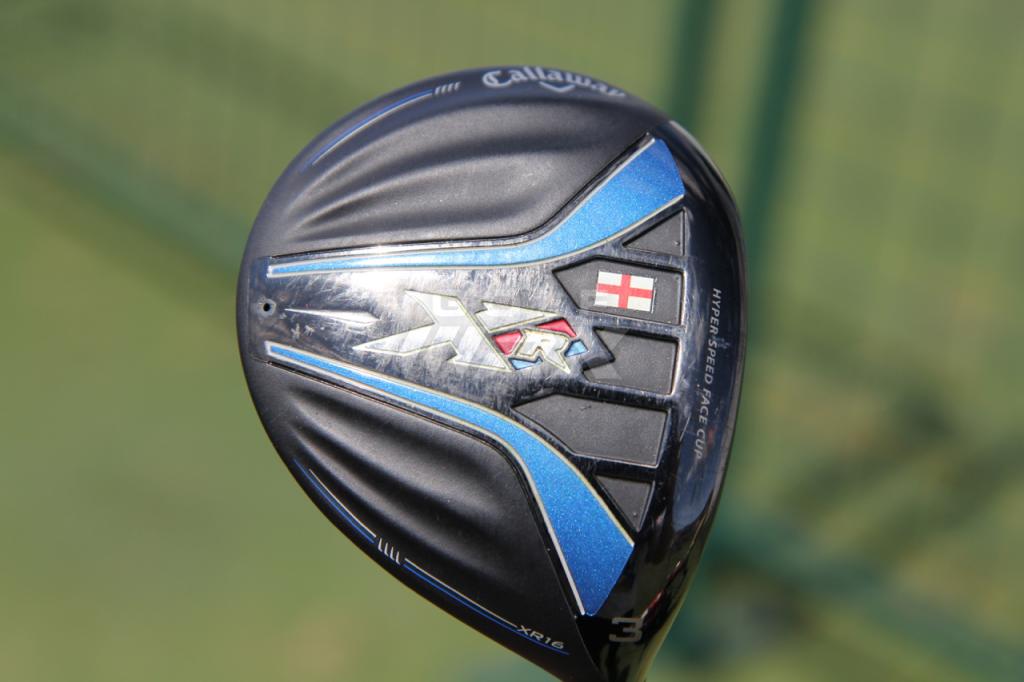

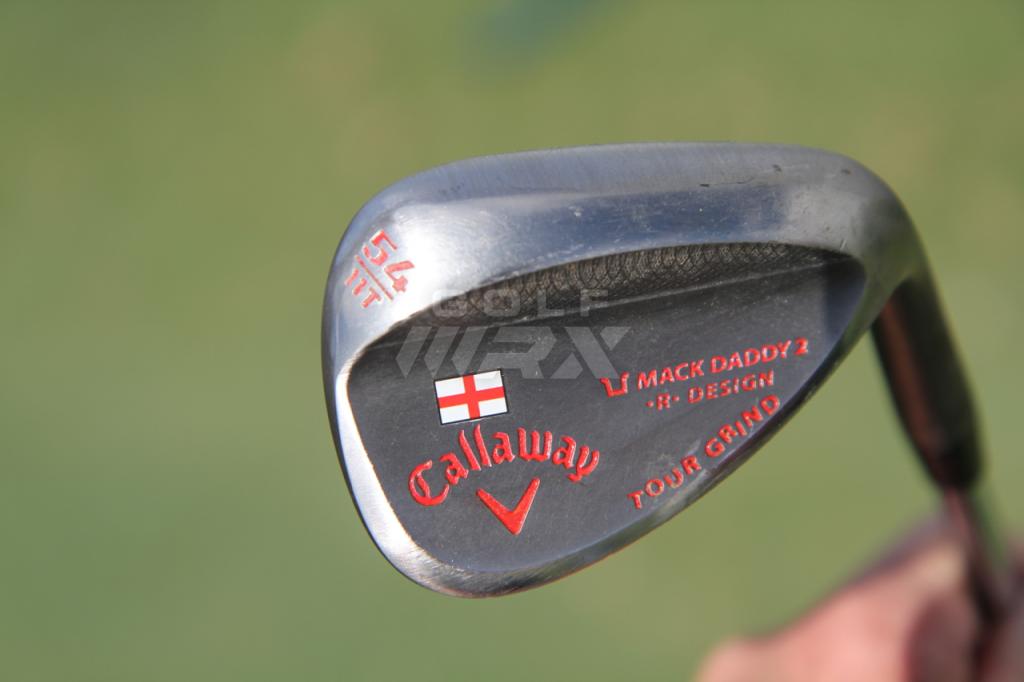
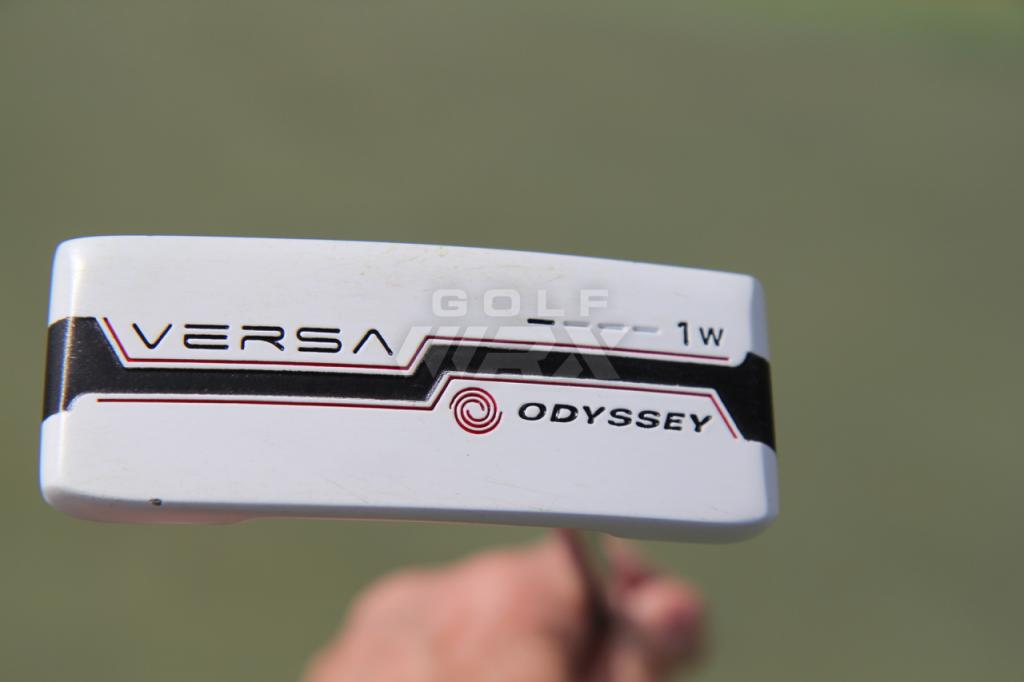














Chris
Jun 25, 2016 at 11:34 am
Imaginative responses. I’ve played a Newport 2 for 11 years – my first and only putter. Just bought this TM because the ball continued dropping center cut after three demo days. But you chumps know everything, right?
Rob
Jan 22, 2016 at 8:40 am
Nike look with the new Cleveland raised site line….sadly TM won’t be around by 2018
McCleod
Jan 22, 2016 at 6:39 am
If it helps me make putts and is legal, i don’t care what it looks like.
Jim
Jan 21, 2016 at 11:18 am
Look interesting, maybe a few too many bells and whistles, but overall ok (I use an original Spider putter). Not a fan of the aluminum insert though as I prefer the softer insert used in the original ghost putters. Will have to try in person I guess.
cgasucks
Jan 21, 2016 at 8:04 am
Wal-Martier!
Fahgdat
Jan 21, 2016 at 3:12 am
Sergio Garcia is no longer a teenager. Even he doesn’t want to dress it up like a clown any more. Get with it, TM
spazo
Jan 21, 2016 at 12:57 am
http://cdn.meme.am/instances/500x/60441268.jpg
DB
Jan 20, 2016 at 8:10 pm
Cool Ideas – Polymer fill, higher MOI
Bad – Red sight line, tacky looking, cheap looking insert, >$200.
Overall – Shank.
Aaron
Jan 20, 2016 at 5:46 pm
And TM wonders why they’re in trouble… If you make stuff like this and then attempt to peddle it to the discerning golfers at over $200 you deserve the lack of sales you’re about to see. They went from innovative and high performing/quality to a “churn it out” and we’ll market the hell out of it type of business model and this is just bad… They haven’t made a clean milled putter since the Kia Ma days and the comments on here should be read in their next board meeting.
Brodie Hock
Jan 20, 2016 at 3:21 pm
These putters = Odyssey & TM Nubbins Putters love child. 😛
RH
Jan 20, 2016 at 3:00 pm
Junkasaurus Rex
Fahgdat
Jan 21, 2016 at 3:10 am
+1
RoGar
Jan 20, 2016 at 1:05 pm
Same putters new paint job, keep putters clean, smooth, and simple…
Dj
Jan 20, 2016 at 12:44 pm
Uh, Nike much?
JohnJohn
Jan 20, 2016 at 2:01 pm
Yep looks like my 2013 Nike putter
Eric
Jan 20, 2016 at 12:42 pm
LOL